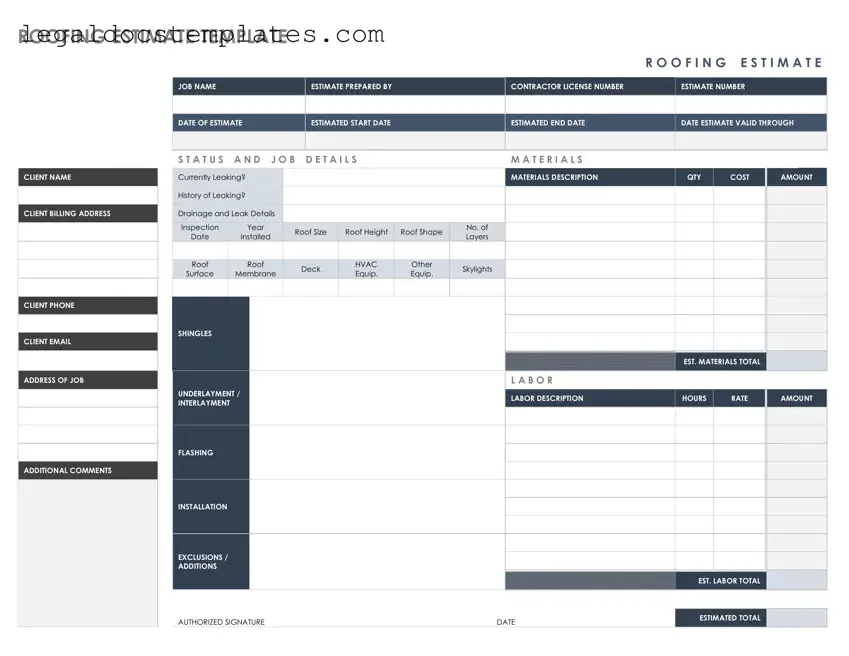A Construction Proposal mirrors the Roofing Estimate form in many respects, primarily in its function as a foundational document for initiating a particular project. Like a roofing estimate, a construction proposal outlines the scope of work, materials needed, labor, and costs associated with a construction project. Both documents serve as an initial step towards formalizing the agreement between a service provider and a client, setting expectations for both parties regarding the project's financial and practical elements.
An Invoice shares similarities with the Roofing Estimate form by itemizing services and costs, though its primary role comes into play at the end of a transaction. It details the final amount due from the client for services rendered, often reflecting the initial estimates provided. While an estimate is prospective, giving a foresight of expected expenses, an invoice confirms those expenses post-completion, aligning closely in structure and content but differing in timing and function.
The Home Improvement Contract, much like the Roofing Estimate form, is key in establishing the terms of a project between a homeowner and a contractor. This document dives deeper into the specifics of the project, including detailed descriptions of the work to be done, materials used, timelines for completion, and payment schedules, often building upon the initial financial and scope outlines provided in the roofing estimate. This ensures a mutual understanding and agreement, legally binding the parties to the outlined terms.
Material and Labor Release forms parallel the Roofing Estimate form in their relation to construction projects, particularly focusing on the aspect of materials and labor. These forms are used to document and acknowledge the completion of certain phases of work and the use of materials, often linked to payment milestones. While the Roofing Estimate provides a prospective summary of materials and labor costs, Material and Labor Release forms confirm these aspects have been satisfactorily rendered and paid for, safeguarding against liens on the property.
The Change Order Form, akin to the Roofing Estimate form, deals with the financial and logistical aspects of amending the original scope of work on a project. It serves to document any changes to the initial agreement, including adjustments in costs, materials, or timelines. Both documents ensure transparency and agreement between the involved parties when modifications to the project occur, maintaining a clear record of agreed-upon adjustments, thereby preventing future disputes.
A Warranty deed, in a broader sense, shares a connection with the Roofing Estimate form through the assurance it provides to the involved parties. While the Roofing Estimate offers an initial financial overview and expectation of the project, a Warranty Deed guarantees clear ownership of property free from liens or claims, often a concern when significant home improvement projects are undertaken. This legal document complements the estimate by ensuring that the work completed does not encumber the property’s title, safeguarding the homeowner’s investment.
The Lien Waiver document operates in conjunction with the mechanics of a Roofing Estimate form by playing a pivotal role in the financial and legal aspects of construction projects. Issued upon the completion of payments for services and materials, it acts as a receipt that prevents future claims or liens against the property for those specific transactions. This contrasts with a Roofing Estimate’s forward-looking nature by providing closure and legal protection after the completion of contractual obligations, ensuring all parties fulfill their financial commitments as agreed.

